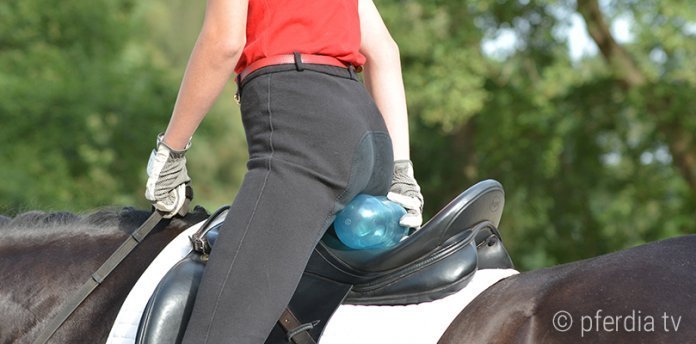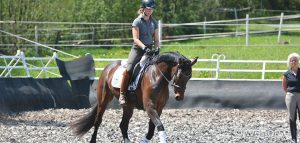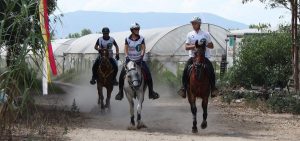Adopting a correct rider’s position is a concern for every rider. There are usually two groups of riders that deal with the chair seat problem: new riders at the beginning of their training, and many, many riding instructors teaching the basics. Because no matter how often the chair seat occurs, there is often a lack of practical approach to successfully tackle this seat flaw. Sibylle Wiemer and Dr. Britta Schöffmann explain here how they solve the chair seat problem in a practical way and what exercises can help you improve your overall rider’s position.
Summary
- What is the “chair seat”?
- Why is the saddle so important?
- How does it affect your rider’s position?
- Exercises to correct the chair seat
What is the ‘chair seat’?
Instructor Sibylle Wiemer has direct knowledge of this problem, as well as its misinterpretations. ‘One frequently hears the term ‘chair seat’ to describe a riding position where people sit on their backsides and ride with very short stirrups’. That, however, isn’t the chair seat. In chair seat, the pelvis is so pitched that the rider tips back like he or she is sitting back on a chair or a sofa, the arms extended forwards and the feet pressing into the stirrups for stability. The knees are raised, and the rider’s feet are either under the knees or in front of them. The typical chair seat position has four components:
- The upper body pitches backwards
- The arms are held out in forward extension
- The knees are raised up
- The feet are positioned too far forwards
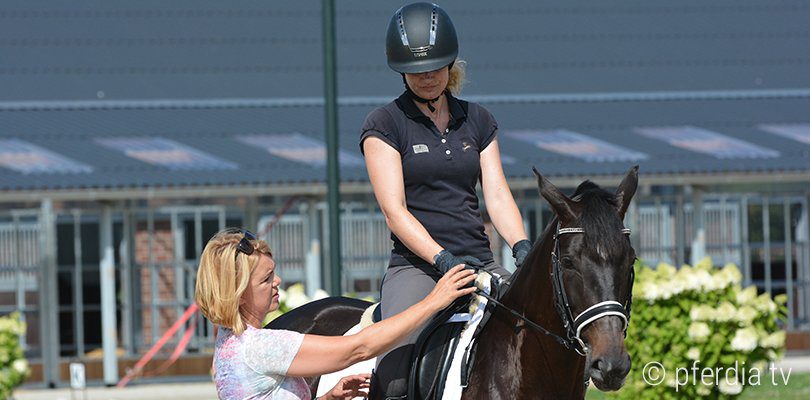
Why is the saddle so important?
For dressage trainer, Dr. Britta Schöffmann, the rider’s position can be truly affected by the saddle. ‘First I look to see if the saddle fits‘, she says, ‘because chair seat can also occur when the center of gravity is shifted too far back.’ If the saddle tips backwards, the rider’s thighs will automatically slide forwards. ‘The problem is often remedied by elevating the back of the saddle.’ Other possibilities: the saddle form is not ideal, or the rider’s thighs are too long or too wide for their hips. Sometimes, the rider’s anatomy simply doesn’t fit to the horse’s. It will not be easy for a rider with short legs to sit correctly on an extremely wide horse. In this case, finding the correct riding position will take practice and time.
How does the chair seat affect your rider’s position?
‘The cause for all these problems stems from a rigid pelvis‘, says Sibylle Wiemer, ‘and that is caused by shortened lumbar muscles’. These muscles (also known as the psoas muscles) connect the lumbar vertebrae with the femur. The elasticity of these muscles is impaired from long periods of sitting. What this means is that the more the rider tilts backwards, the further the knees come up.

First Exercises: Swinging the Legs
Sibylle Wiemer’s favorite exercise to help her riders improve their position is as follows: The rider swings his legs back and forth in tempo, using only his thighs. ‘The rider should move his legs forwards and backwards in the saddle’, says Sibylle Wiemer. However, this must be done correctly for the right effect: ‘Don’t use the lower leg, from the knee down, to move! And don’t just lift and drop your knees!’ Many will find this quite unusual movement difficult to do. In the beginning, the rider may feel that he’s ‘getting a cramp in his backside.’ But she promises, ‘If you do this exercise at a walk every day for 10-14 days, it will make your sitting trot easier and help loosen up your pelvic muscles.’
Second exercise: Using the Franklin Balls
For riders with chair seat, dressage trainer Britta Schöffmann likes to take advantage of the fact that new physical experiences can have stronger impacts on the rider’s position. She uses Franklin balls to create situations that give the rider a new body awareness. For this she likes to use air-filled, peanut-shaped balls. She’ll place one on the saddle, under the rider’s backside. ‘This way the rider can tilt the pelvis better and get away from chair seat.’
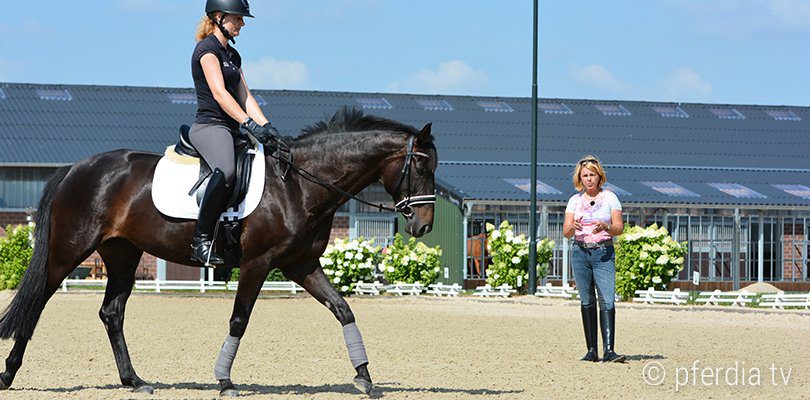
Third exercise: Placing sponges in the stirrups
Sibylle Wiemer has also had good experiences in improving the rider’s position by using sponges, placed in the stirrups and underneath the rider’s feet. They must be hard – either the Meyners-Franklin variety or similar. This slight change has a large effect on the entire body. ‘We don’t know exactly why it has this effect up through the boot. But it interferes with the rider’s balance!’ The results speak for themselves: ‘Many riders straighten up, some lose stiffness, some start to hold their hands more correctly, all because of a sponge underneath their soles!’
With all Franklin exercises, it is important that they are done gently and not for long durations. ‘Never work into the pain’, warns Sybille Werner, ‘and pay precise attention to your whole body, and to how you’re feeling!’ Doing these exercises for too long can lead to complications. Therefore, it’s better to do too little than too much. ‘All these methods have very lasting effects, even if they are taken up slowly’, Sibylle Wiemer explains.
The fact that an exercise involving the feet, such as the sponge exercise, can have an effect on the entire body is because of its fascial lines. In the human body, facial lines connect the back of the head with the back muscles, and run from the bottom of the spine down to the feet. This is a very general and rough description, but it illustrates how everything is connected, and that a change to one part of the body will always affect other parts. ‘If you want to work through chair seat, it doesn’t matter where you start’, says Sibylle Wiemer. ‘Any change will have an effect.’
Take a look at our related playlist on YouTube for more tips and exercises.

